 Cystoderma and Cystodermella - click to expand
Cystoderma and Cystodermella - click to expand
- small (usually <5cm), covered in granular
scales on both the caps and stems, and found on the ground.
- Most are orange to red, although
white forms exist for several species. Common.
Cystoderma
usually have amyloid spore walls (turning black in iodine) and Cystodermella
don't. They look very much the same, but are not as closely related as you
might expect. Cystodermella is not in the same family as the
other "attached gilled" genera, and may be in its own family.
Species mentioned: Cystoderma amianthinum, Cystoderma
jasonis, Cystoderma carcharias, Cystoderma fallax, Cystodermella
granulosum, Cystodermella cinnabarina (terryi), Cystodermella
adnatifolia
Cystoderma - amyloid spore walls
Cystoderma amianthinum group
- This is the palest, brightest orange to yellow-orange coloured
mushroom group in the section. The gills and cap flesh are almost pure white. It is thought to only leave a
trace of a
ring, but some specimens have had a fairly substantial ring and been
mistaken for C. carcharius, below. There are two closely related genetic species in the EU (the second
of which may be the real thing if an epitype sequence is to be
believed). We may have 4 species in the group, and it's not yet clear if
any of them are the real thing.
PNW01 - a sequence from WA matches some EU sequences quite well, and
a sequence from BC differs by 4 bp in ITS1 only.
PNW02 - one BC and one WA sequence are 6-8 bp from another EU species (the one
that might be the real thing). It may have a reticulated cap like
PNW03.
PNW03 - our most common species, that often has a reticulated cap like var. rugosoreticulatum,
although that is a European variety and the DNA of our common species
has only been found here so far.
CO01 - known from one WA, one BC and one CO collection, matching some EU
sequences as well.
Although some varieties of
C. amianthinum were promoted to species level because they are
genetically quite distinct (var. longisporum to C. jasonis,
below, and var. sublongisporum to C. intermedia) our group
members are closely related and could potentially remain as varieties.
We need more collections to see how to tell these species apart.
Cystoderma intermedium's European type sequence is the same as
Cystoderma carcharias below. Cystoderma amianthinum var.
sublongisporum was reported from the PNW and declared a synonym, but
I don't think it necessarily is, so it should be investigated what
the genetics are of var. sublongisporum.
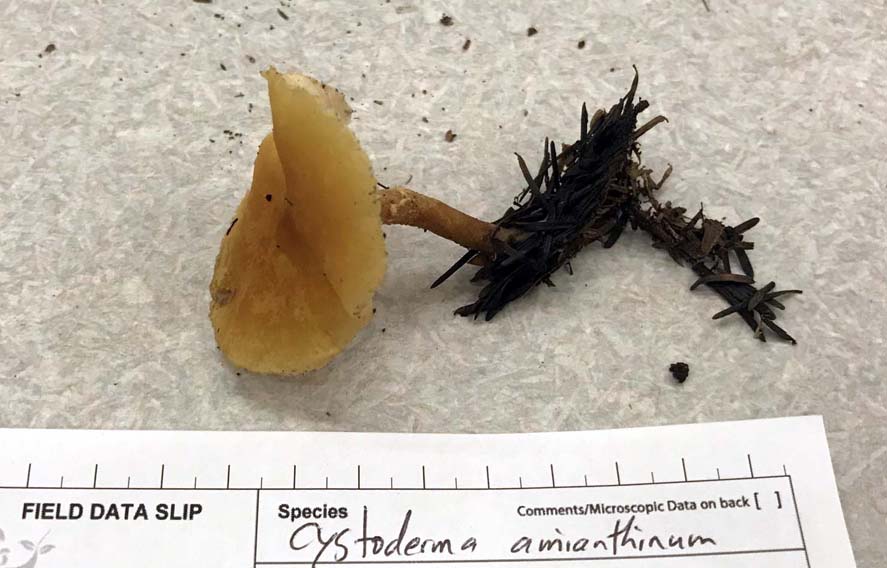
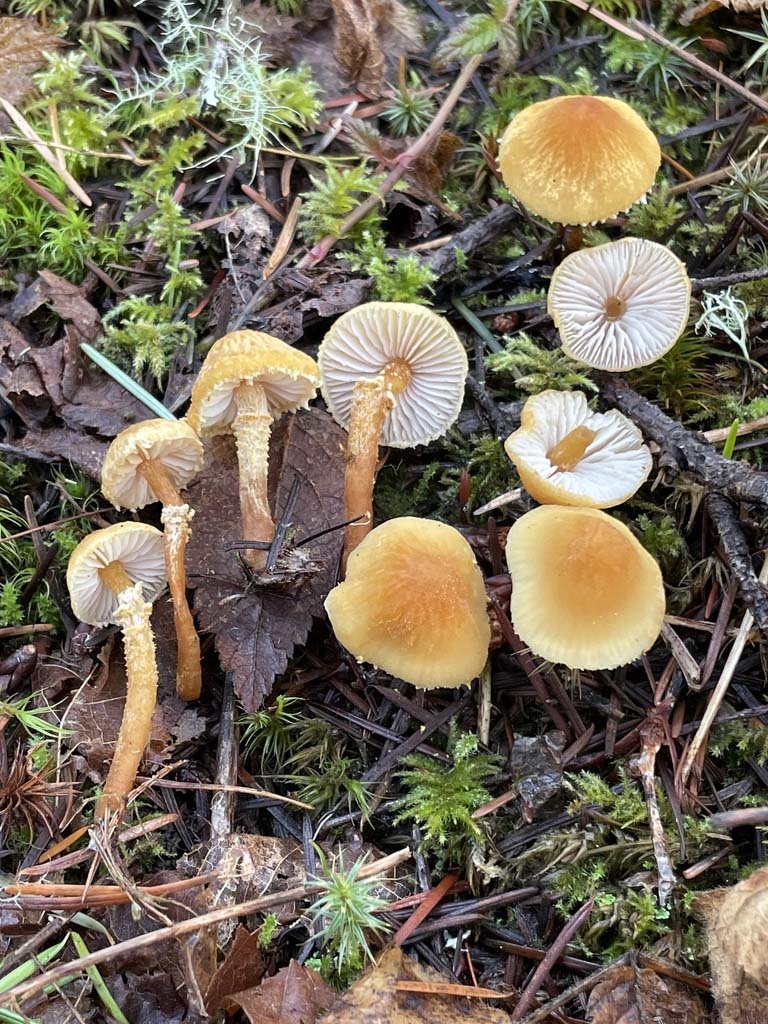
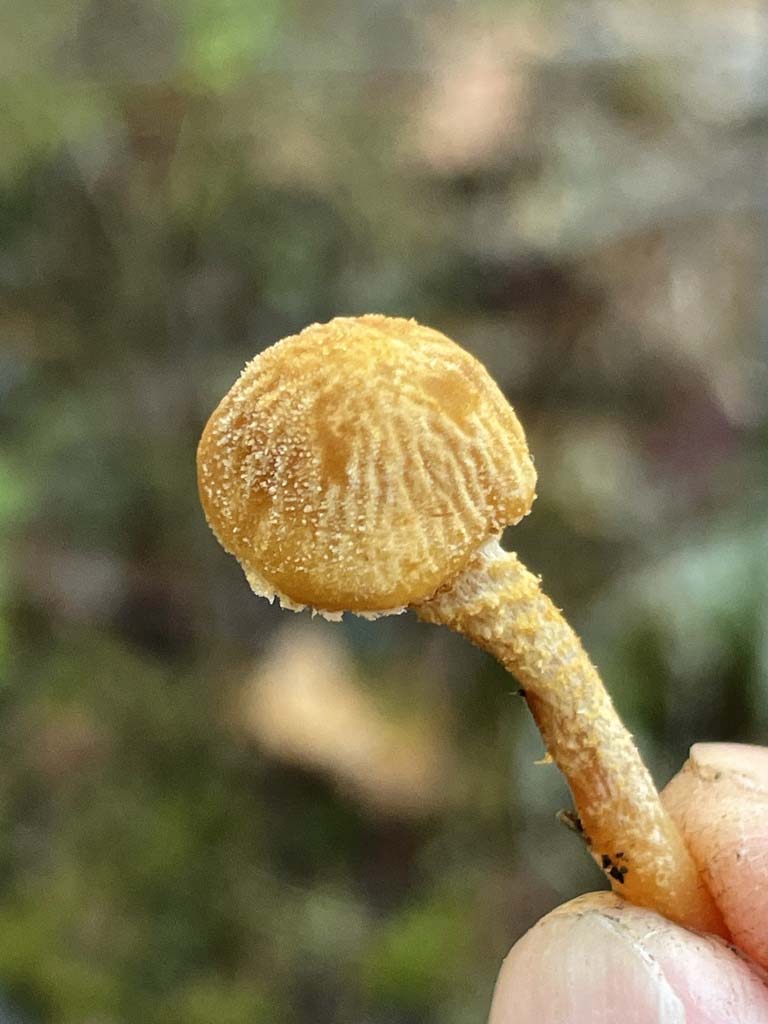
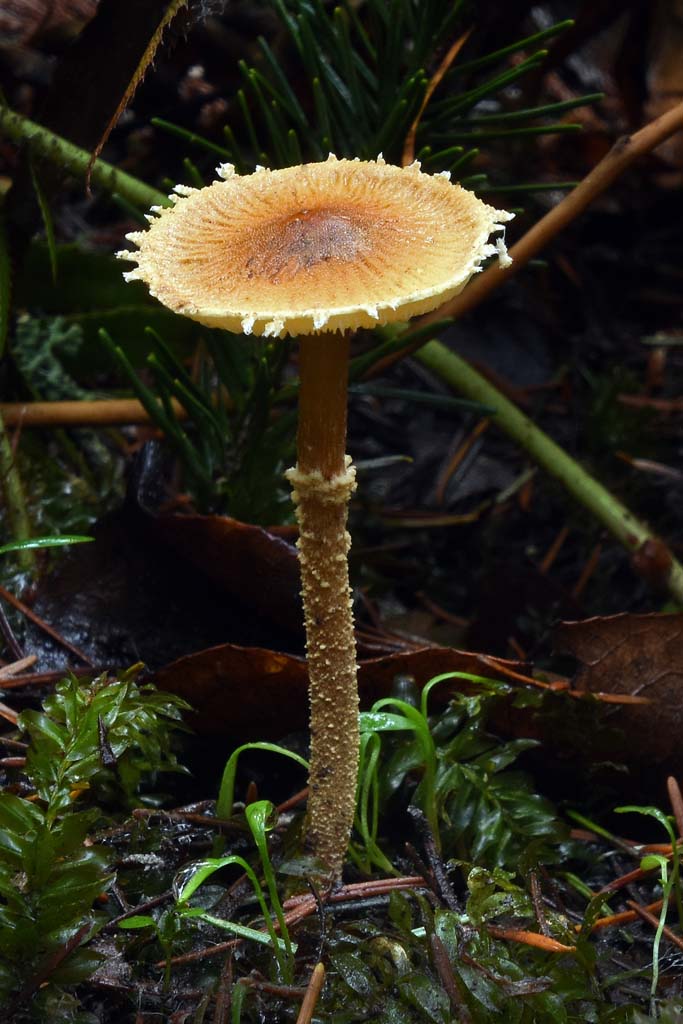
Cystoderma 'amianthinum PNW01' © Danny Miller, C. 'amianthinum
PNW02' © Yi-Min Wang (2 images), C. 'amianthinum PNW03' © Danny
Miller


Cystoderma 'amianthinum CO01' © Steve Ness (2 images)
Cystoderma jasonis UK - Very similar,
perhaps less likely to be found in moss, perhaps a little darker in colour
and with a brown tint to the gills and cap flesh. It is so similar
to the C. amianthinum group that it was never
noticed to be present in the PNW until a UBC student found and sequenced one.
The biggest difference is microscopic - longer spores. It used to be considered
a variety of C. amianthinum (var. longispora) but it's not
closely related enough to be a variety. Considered
rare for now, but maybe
not, as nobody has been looking for it. There is an albino form in
Europe that should be looked for here.
Cystoderma 'jasonis PNW04'
- two BC sequences are 1% different in ITS. One is brown instead of
orange, but that may be weathering as a nearby C. amianthinum
group member was also unexpectedly brown. The other collection was paler
orange and resembled the C. amianthinum group.
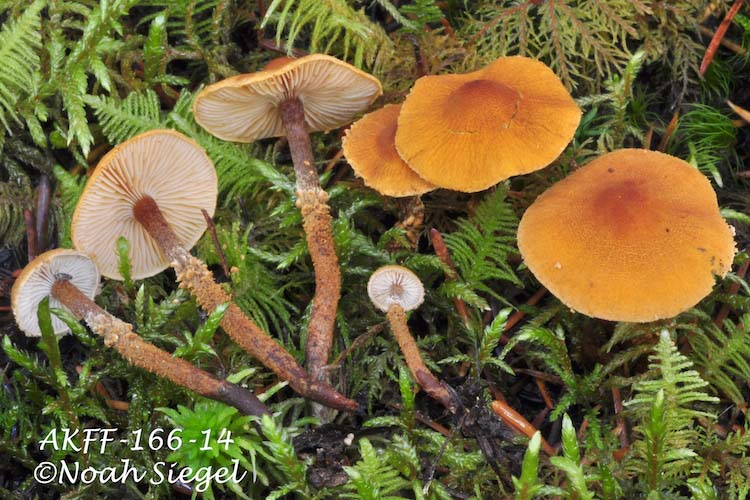
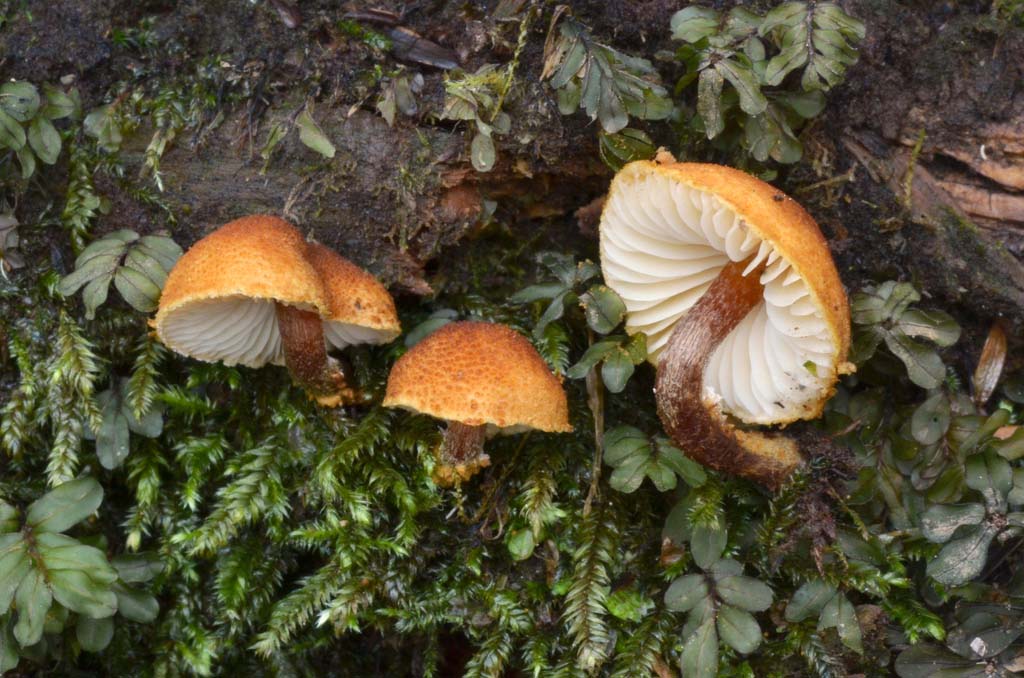
Cystoderma jasonis © Noah Siegel and Connor Dooley
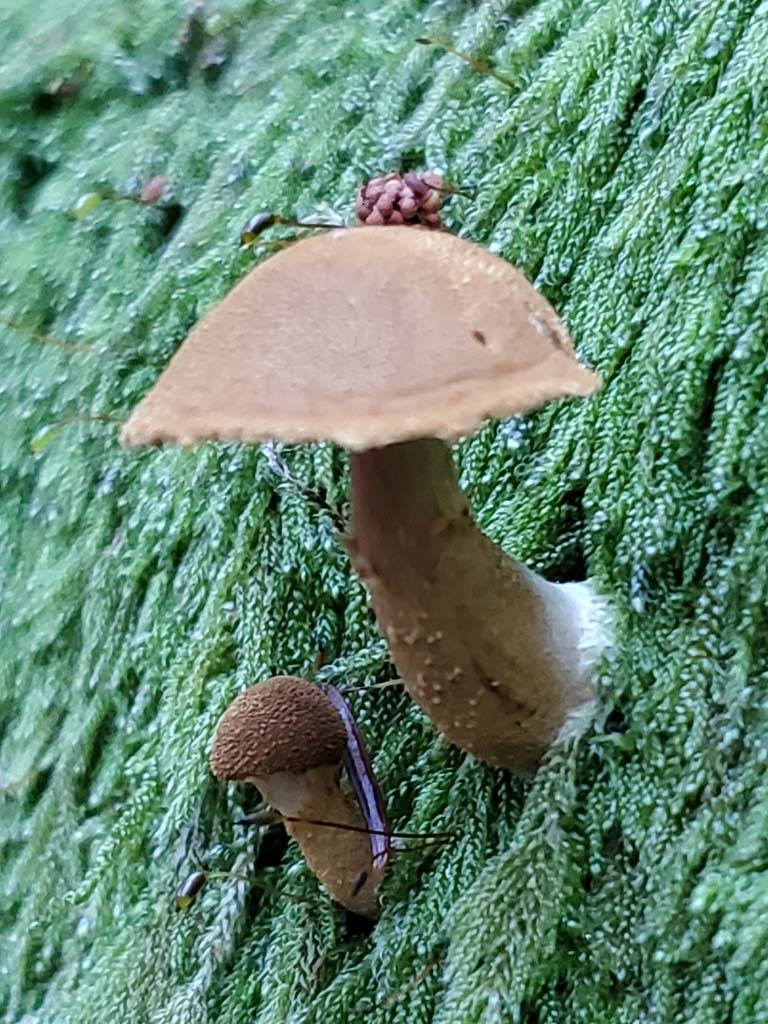
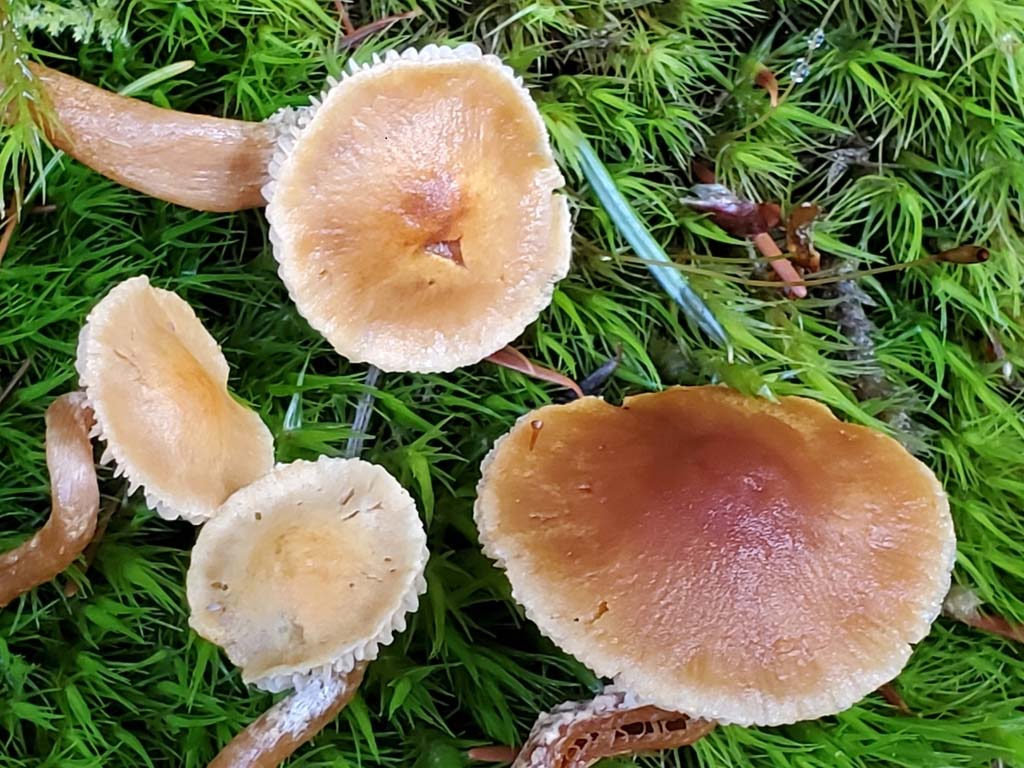
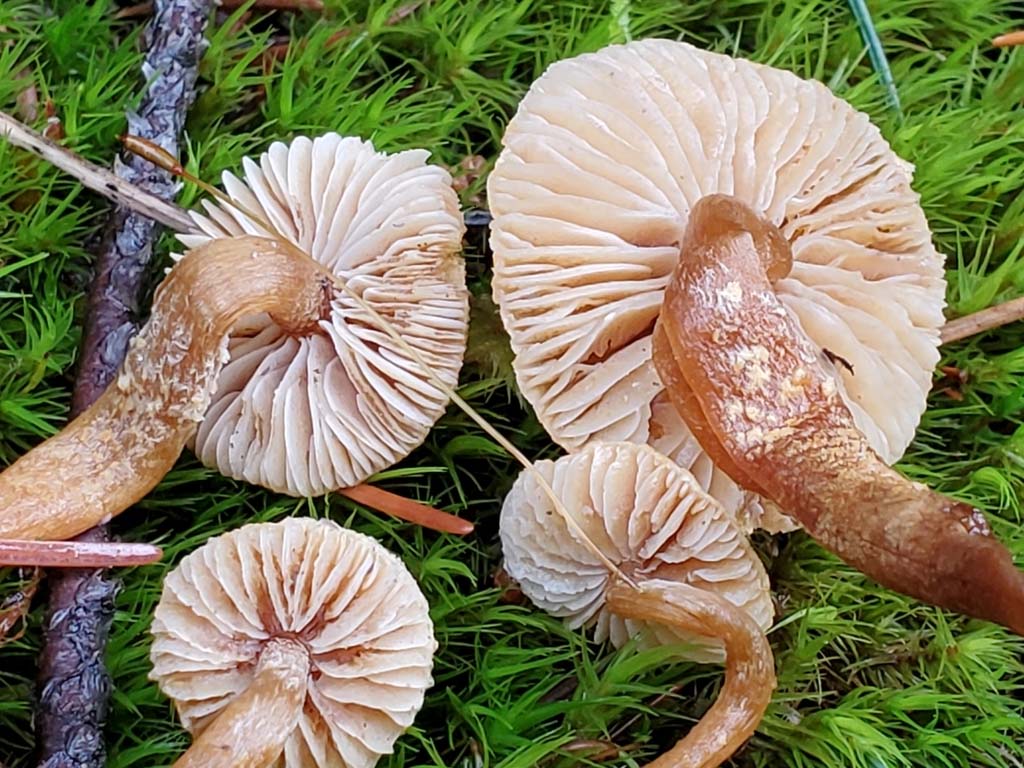
Cystoderma 'jasonis PNW04' © Vail Paterson (3 images)
Cystoderma carcharias
EU (Cystoderma
carcharias var. fallax WA)
This species has the most well
developed ring of any species in this group. Cystoderma carcharias is a
rare white EU mushroom, and Cystoderma fallax is a
common orange-brown
WNA
mushroom that was found to be identical except for colouration, so it was
reduced to a variety, Cystoderma carcharias var. fallax. They can have
identical ITS DNA, so thinking of it as only a variety might be the proper
nomenclature, or perhaps even just a colour form. European sequences of both colours may vary from each other by as
much as 3 bp, but most consider it all one species. Our local PNW var. fallax sequences are
an additional 2-3 bp different. So far I am considering them all the same
species. The ring can
wear off making it resemble other species.
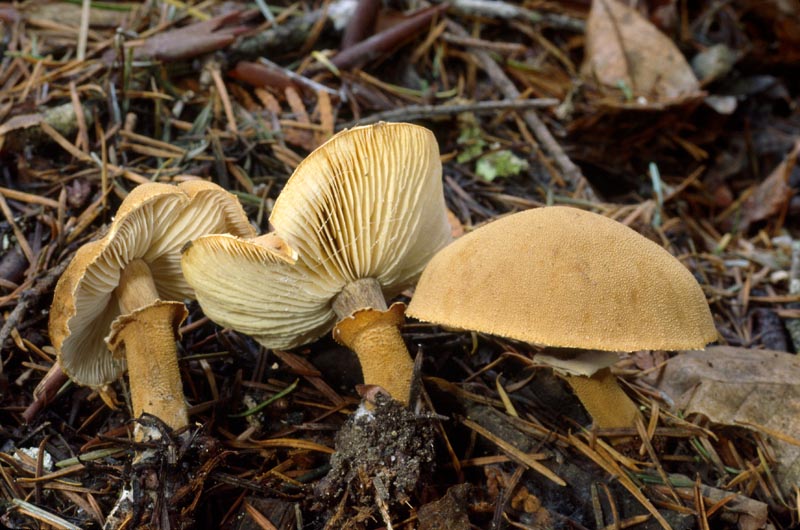
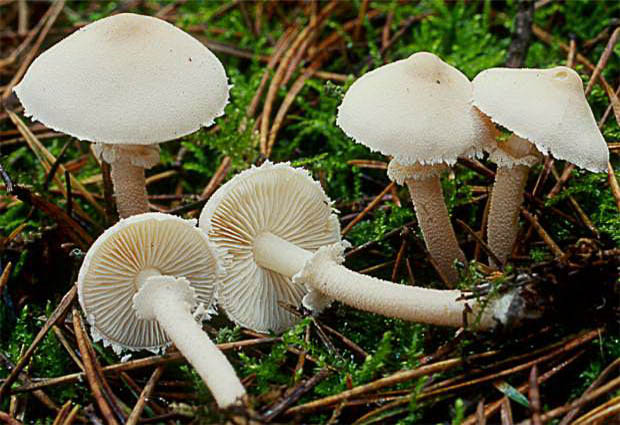
Cystoderma carcharias (var. fallax) © Steve Trudell, (var. carcharias) © Boleslaw Kuznik
'Cystoderma'
gruberianum OR - This small (<3cm) clay-brown capped mushroom is found
on Doug fir logs instead of on the ground, has a conic cap, and
has very large amyloid spores compared to other species. It was described
from Oregon, and is very rare (not found again since it was described in 1949).
I'm not convinced it's actually a Cystoderma but somebody will need to find it
again or sequence the type to figure out what it is.
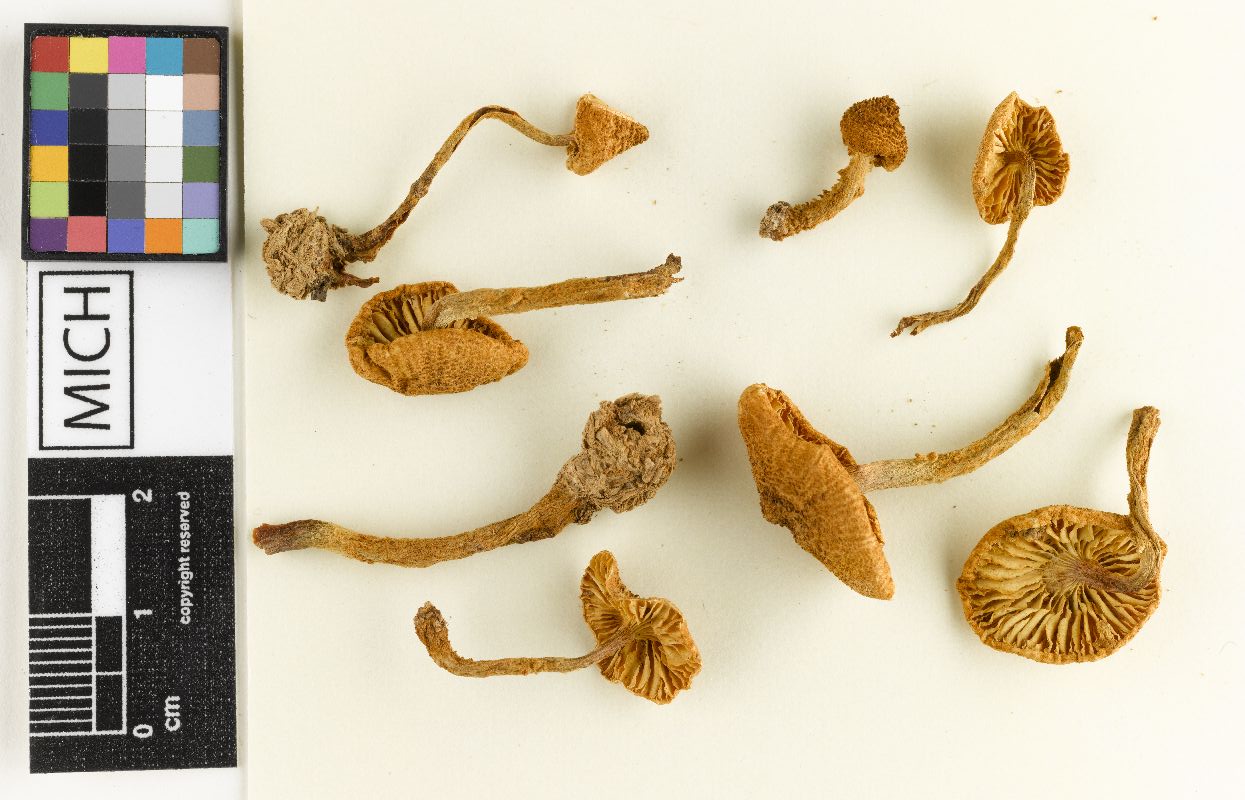
Cystoderma gruberianum © University of Michigan
Cystoderma PNW06 - a
beautiful purple species! Not known until it was sequenced once
in WA, matching what might be one Chinese sequence and that's it, on its
own branch of the tree. It's possible it needs its own genus because I
can't get high support with the rest of the genus, but for now I am
assuming it doesn't. It may be Cystodermella subpurpurea,
described next.
Cystodermella subpurpurea OR
- described from Oregon, so it's definitely
here, but it's another rare species not found again since it was originally described
in 1948. It has a very small (<1cm) grey cap with a purplish tinge.
We need to find it again or sequence the type to find out what it really is. One
possibility is Cystoderma PNW06 or Squamanitaceae CA01.
Squamanitaceae CA01 -
another possible identity of C. subpurpurea is this greyish species
perhaps with a hint of purple, found only in CA so far, whose colour
might better
match the description. It is in the same genus as PNW06, whether
that be Cystoderma or something new. Perhaps it does deserve its
own genus, if one of these are Cystodermella subpurpurea, that
would explain why it was mistaken for a Cystodermella and not
recognized as a Cystoderma.

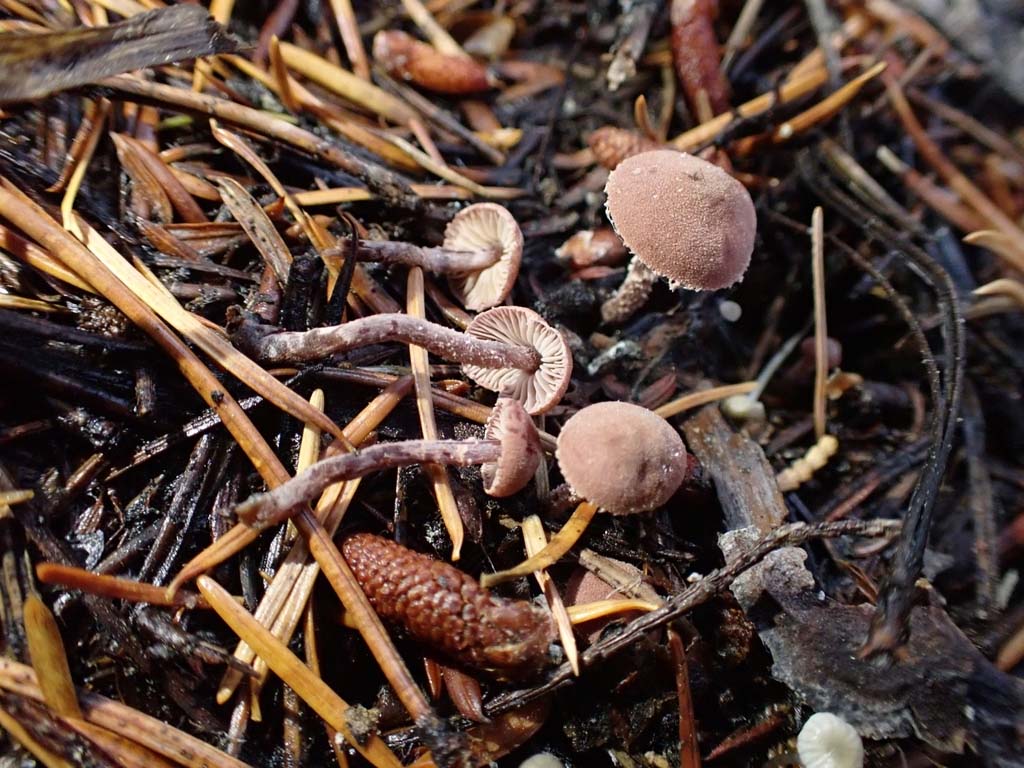
Cystoderma PNW06 © Connor Dooley, Squamanitaceae CA01
© Sadie Hickey
Cystodermella - without amyloid spore walls
Cystodermella granulosa EU (Cystodermella
granulosa var. ambrosii EU) - Cystodermella granulosa
usually has a darker
orange-brown to reddish-brown cap than Cystoderma jasonis. It has no extra sterile cells on the gill edges
(cheilocystidia), unlike Cystodermella cinnabarina, below. It has
inamyloid spores, like all Cystodermella. Our local sequences are 3bp and 3 indels different than
European material, but so far considered to be the same species. This common species is
also
rarely found with a
white cap, called Cystodermella ambrosii, with identical ITS.
It has recently been described as
a variety, Cystodermella granulosa var. ambrosii, but it
might be considered
just a colour form.
Cystodermella adnatifolia NY
-
This east coast species is also found out here (sequenced collections from near
Mt. Rainier and near Stampede Pass in WA). It usually has a more brightly coloured cap
than the very similar C. granulosa,
and the same lack of cheilocystidia and inamyloid spores. It is probably uncommon,
or very difficult to tell apart from C. granulosa in practice, since it has gone unnoticed.
Cystodermella PNW01
- another brightly coloured species found once in OR. It is not
yet known for sure if it has cystidia or not, but clades closer to the
group without them. I don't yet know how to tell it apart from C.
adnatifolia.
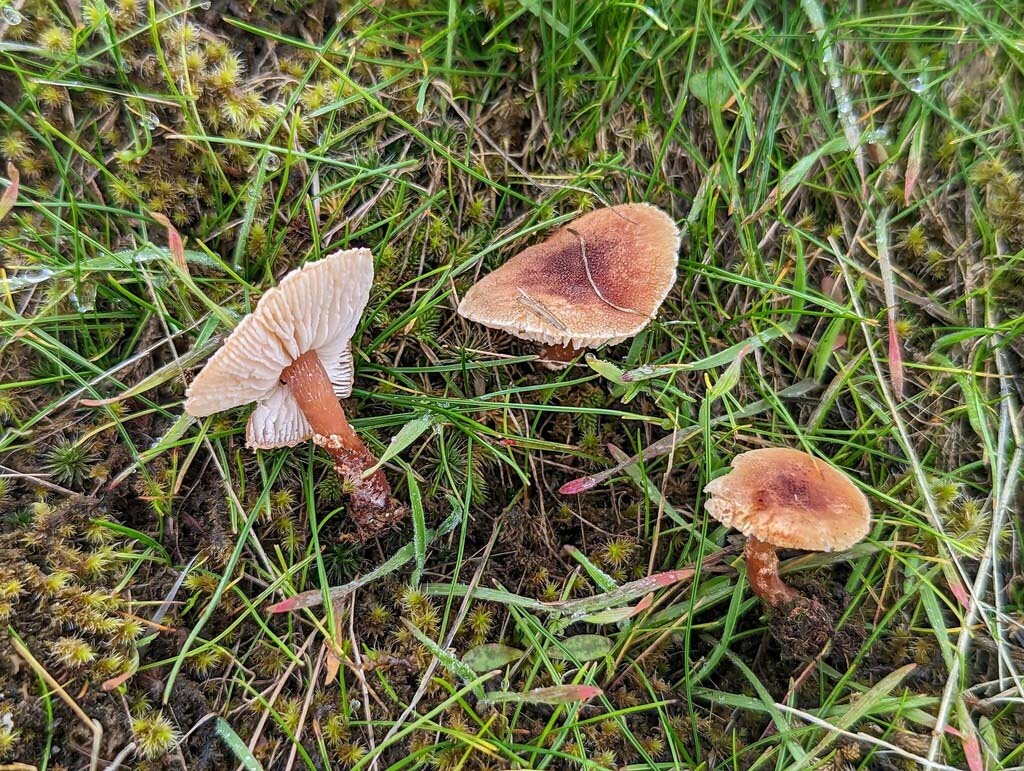
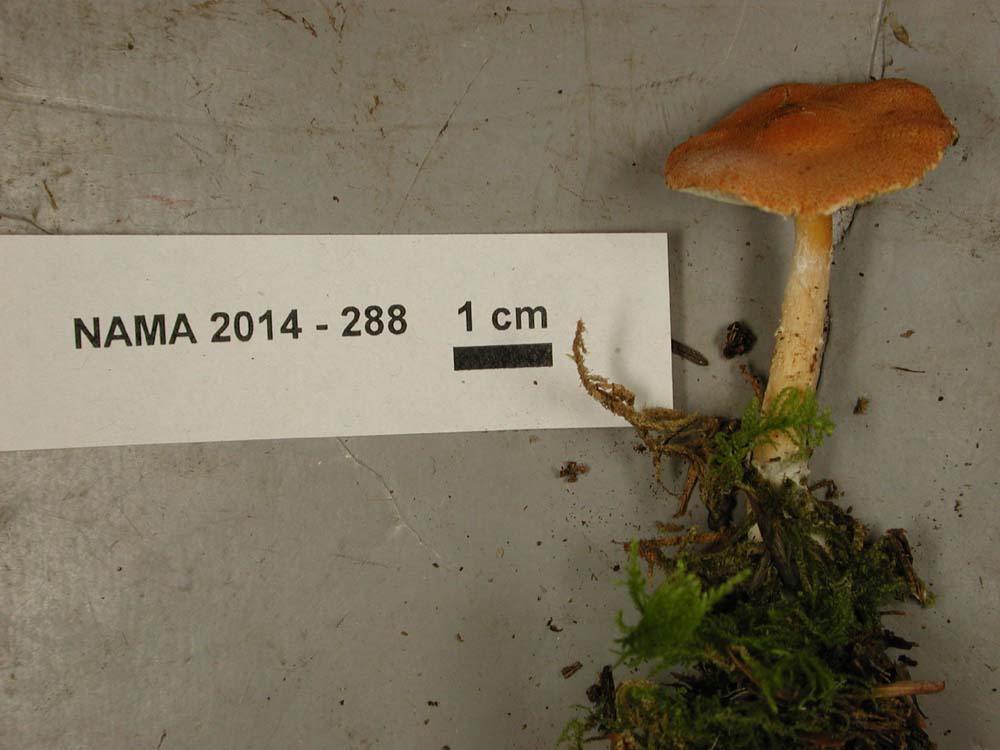
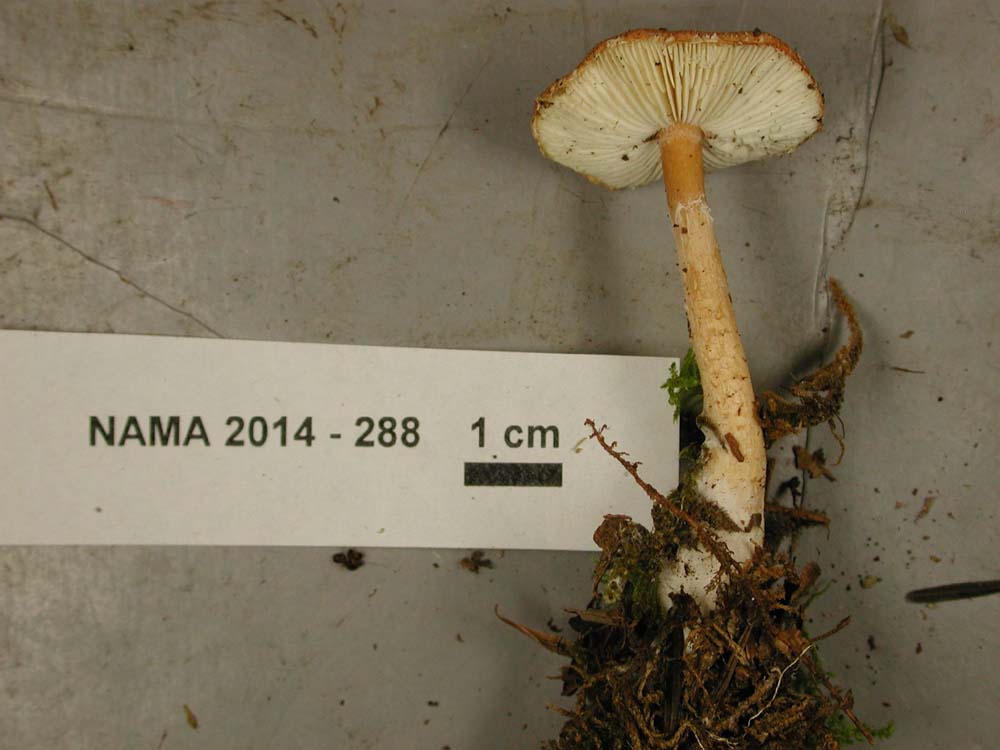
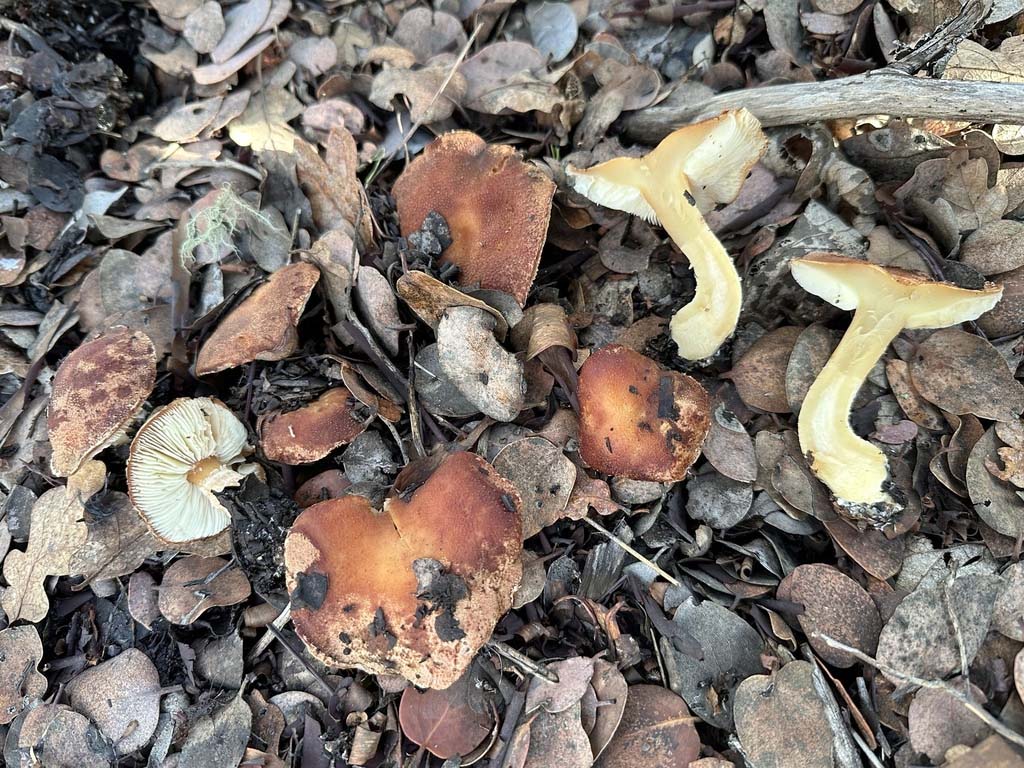
Cystodermella granulosa © Andrew Parker, C. adnatifolia © NAMA and the Field Museum of Natural History
(2 images), C. PNW01 © Jonathan Frank
Cystodermella
cinnabarina EU - Also more brightly coloured like C.
adnatifolia,
this common species has large sterile
cells on the gill edges (cheilocystidia), giving them a fringed appearance under a hand lens
if you don't have a microscope. One OR sequence is an exact match except
for a few ambiguous locations and a couple of WA sequences are 2 bp
different from EU material, so there is strong genetic evidence of this
species here.
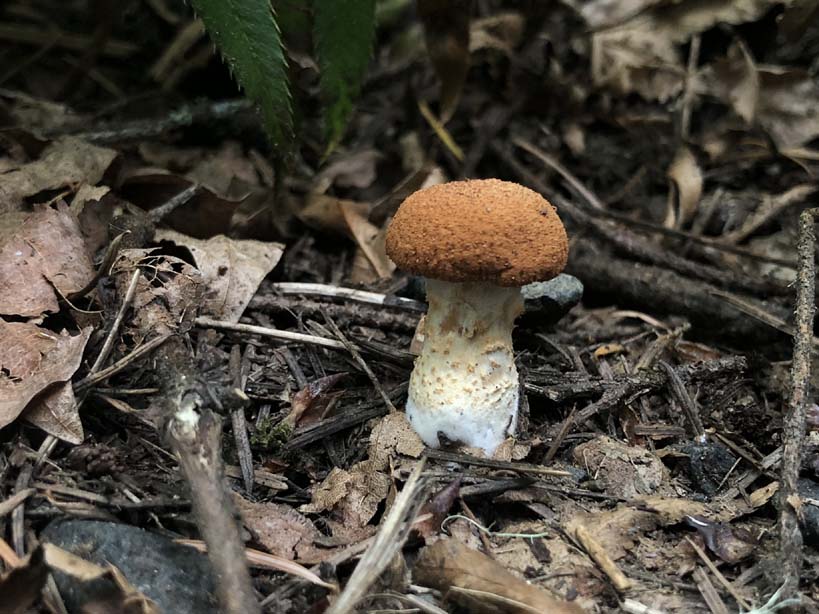
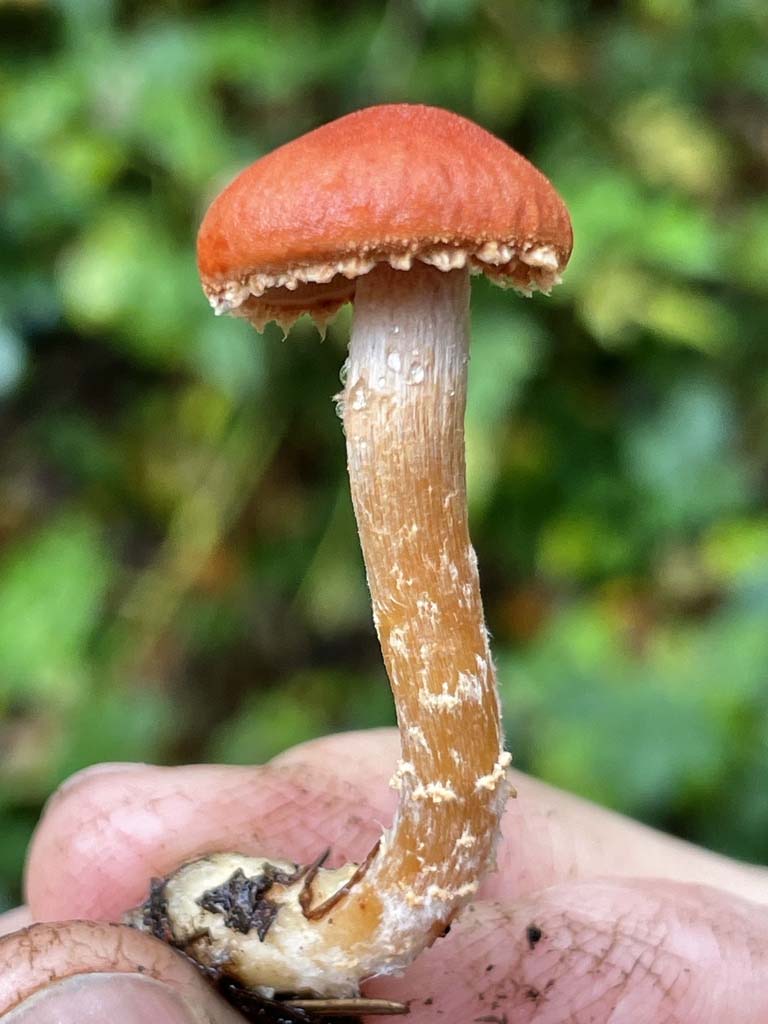
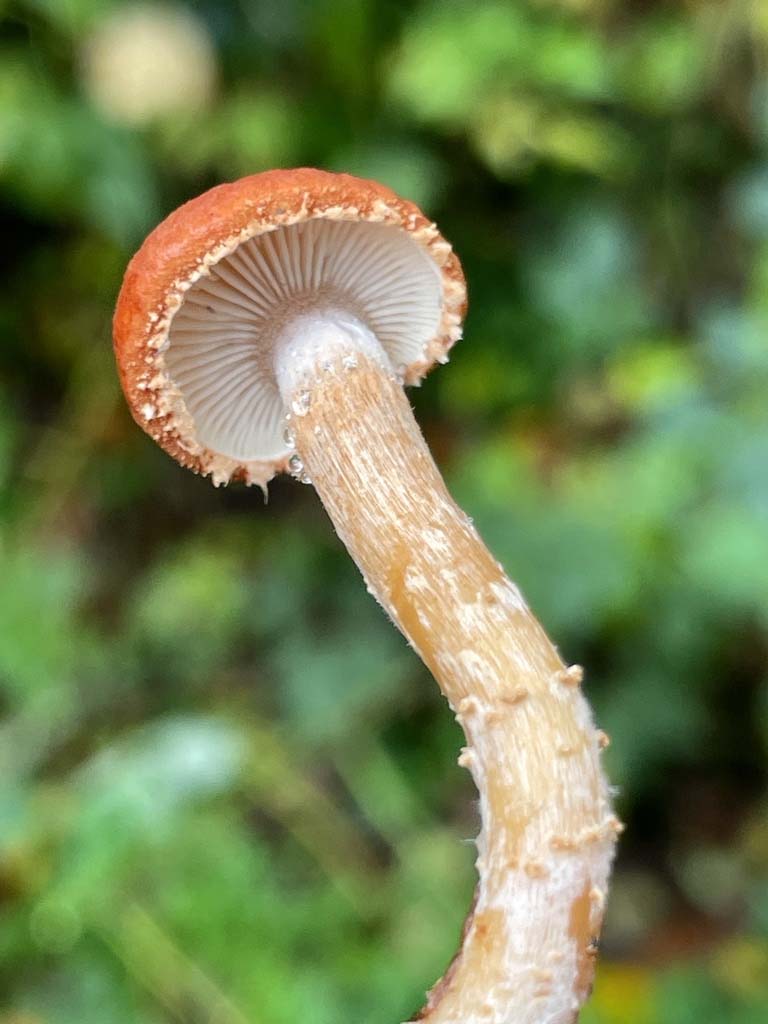
Cystodermella cinnabarina © Lauren Ré and Yi-Min Wang (2 images)
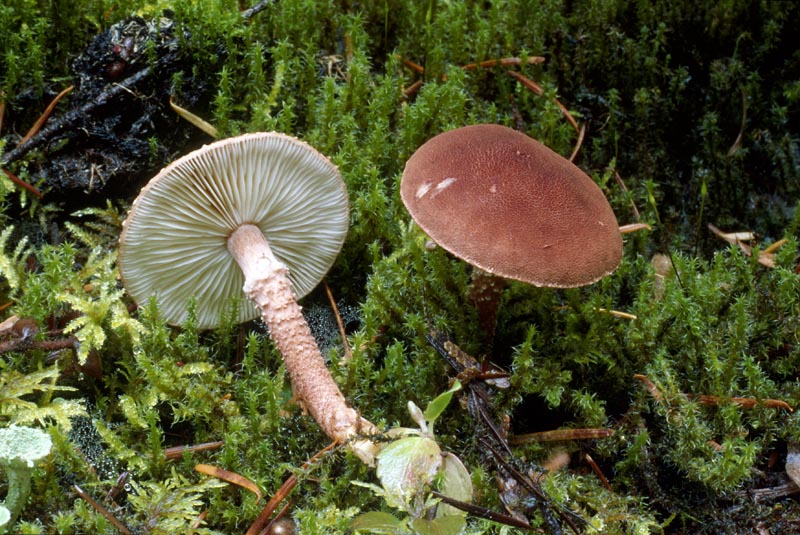
 Cystoderma and Cystodermella - click to expand
Cystoderma and Cystodermella - click to expand
 Phaeolepiota - click to expand
Phaeolepiota - click to expand
 Floccularia - click to expand
Floccularia - click to expand
 Leucopholiota - click to expand
Leucopholiota - click to expand
 Squamanita/Dissoderma - click to expand
Squamanita/Dissoderma - click to expand